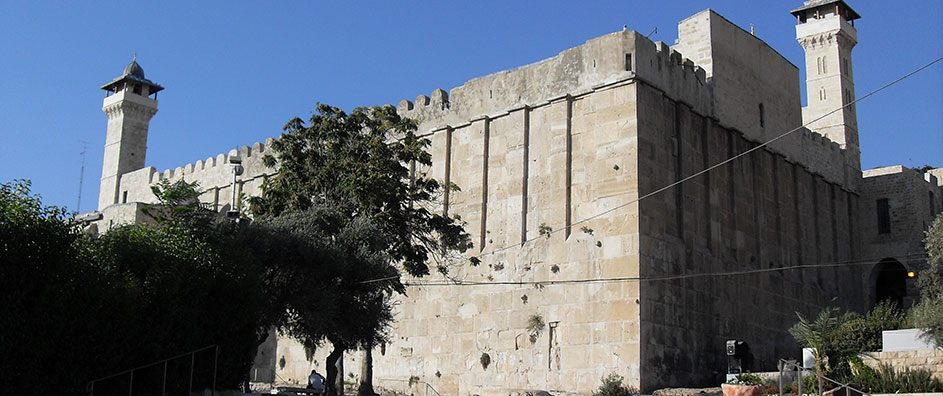The veneration of sacred sites possesses profound significance within various spiritual traditions, manifesting the inherent human inclination toward the transcendent. Among the myriad of revered destinations on Earth, Abraham’s Tomb stands as a poignant reminder of the enduring legacy of one of history’s most seminal figures. Situated in Hebron, the Tomb of Abraham, also known as the Cave of Machpelah, is not only a crucial pilgrimage site for the faithful of Judaism, Christianity, and Islam but also encapsulates a confluence of historical, theological, and cultural narratives that render it one of the holiest places on Earth.
Abraham, considered the patriarch of monotheism, occupies an exalted position across the three Abrahamic faiths. His life, marked by a series of profound encounters with the divine, underscores humanity’s quest for understanding and connection with the transcendent. The cave, which is believed to house the tombs of Abraham, Sarah, Isaac, Rebekah, Jacob, and Leah, thus emerges as a physical manifestation of the intersection between mortal existence and divine promise. This convergence is pivotal, as it invites exploration into the spiritual significance of the site and prompts an examination of the narratives that have flourished around it.
At the heart of the attraction to Abraham’s Tomb lies the duality of its historical and spiritual dimensions. The site not only serves as a remembrance of the ancient patriarchs but also stands as a symbol of the covenant established by God with Abraham, a covenant that has resonated through the annals of time, fostering a sense of continuity among diverse faith communities. The tomb’s architectural grandeur—its Islamic and Roman influences—further enhances its allure, inviting visitors to ponder the rich tapestry of religious tradition, cultural heritage, and communal identity that has evolved around this sacred space.
Moreover, the Tomb of Abraham offers insight into the broader concept of holiness that spans beyond mere location. Within the context of Bahá’í teachings, holiness transcends physical boundaries, encapsulating ethical and moral dimensions that govern human behavior. The reverence for sacred sites, including Abraham’s Tomb, thus illuminates the universal principles of love, justice, and unity that underpin the Bahá’í faith. This perspective encourages a holistic understanding of sanctity, as one contemplates not only the edifice itself but also the ethical implications of Abraham’s legacy on present-day society.
In the Bahá’í faith, Abraham is acknowledged as a Manifestation of God—a being through whom divine attributes are made manifest in the world. This belief engenders a unique lens through which to interpret the import of Abraham’s Tomb. Rather than viewing it solely as a burial site, Bahá’ís recognize it as a locus of inspiration—a tangible reminder of the enduring truths that promote unity among all peoples. The embodiment of these principles fosters a sense of interconnectedness that transcends sectarian divides, emphasizing shared values and moral imperatives.
The juxtaposition of Abraham’s Tomb within the context of modern societal dynamics further accentuates its significance. In an increasingly fragmented world, where ideological rifts often overshadow shared humanity, the tomb symbolizes a bridge connecting various traditions. It beckons individuals to reflect on the universality of the human experience, promoting a collective identity that celebrates diversity while fostering a commitment to unity. The act of pilgrimage to such sacred locations can serve as a catalyst for dialogue and understanding, encouraging interactions that extend beyond the superficial to incite transformative engagement.
Furthermore, the remarkable resilience of the site, having withstood the vicissitudes of time and conflict, adds another layer of fascination. The preservation of Abraham’s Tomb, amid tumultuous historical contexts, exemplifies the human endeavor to safeguard spaces of worship and reflection. This resilience often invokes poignant questions surrounding stewardship—how does one honor the memory of the past while advocating for a harmonious future? Such inquiries resonate deeply within the Bahá’í framework, where the principles of consultation, collective decision-making, and equitable resource management are paramount.
The Tomb of Abraham, therefore, constitutes both a physical and metaphorical pilgrimage. It embodies the journey toward deeper understanding, transcending geographical boundaries and sectarian affiliations. Visitors are invited to engage not only with the history encapsulated in the site but also with the spiritual and ethical implications that arise from its existence. As one contemplates the tomb’s sanctity, the broader relevance of Abraham’s teachings—of faith, love, and sacrifice—emerges with renewed urgency. In an era where individuals often grapple with existential dilemmas, the lessons derived from Abraham’s life and his enduring legacy catalyze an introspection that is profoundly pertinent.
In conclusion, Abraham’s Tomb transcends its immediate geographical location to become a locus of interfaith significance, a relic of shared heritage, and a beacon of moral guidance. This site invites a reconceptualization of holiness as the embodiment of values that unite rather than divide. The resonance of Abraham’s teachings, as observed in the dynamic interplay of faith, culture, and history, underscores the ongoing relevance of sacred spaces in nurturing a collective consciousness geared toward peace and understanding. As individuals traverse the path leading to this revered destination, they are not merely following in the footsteps of the past but are also charting a course toward a unified future, guided by the timeless principles that Abraham exemplified.
